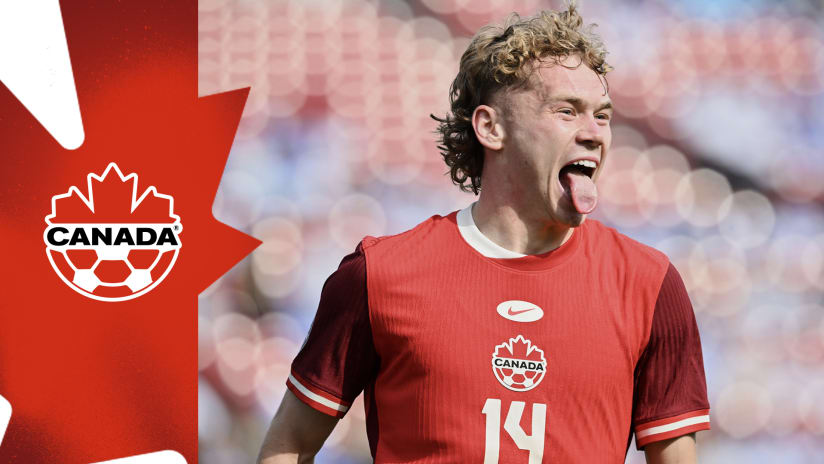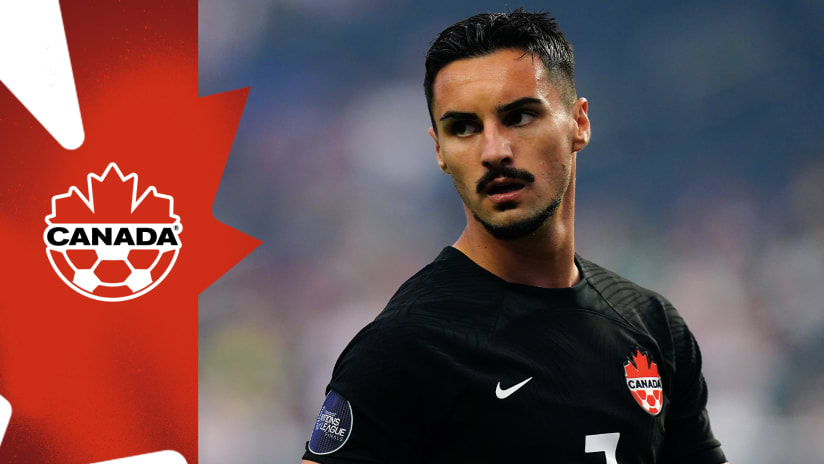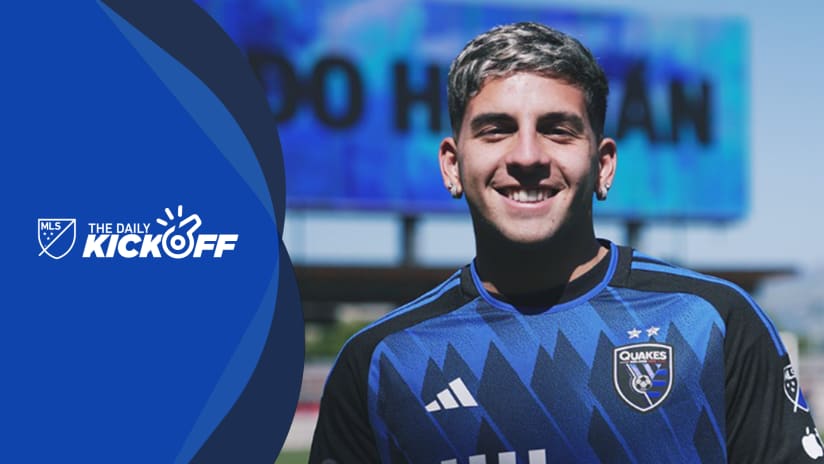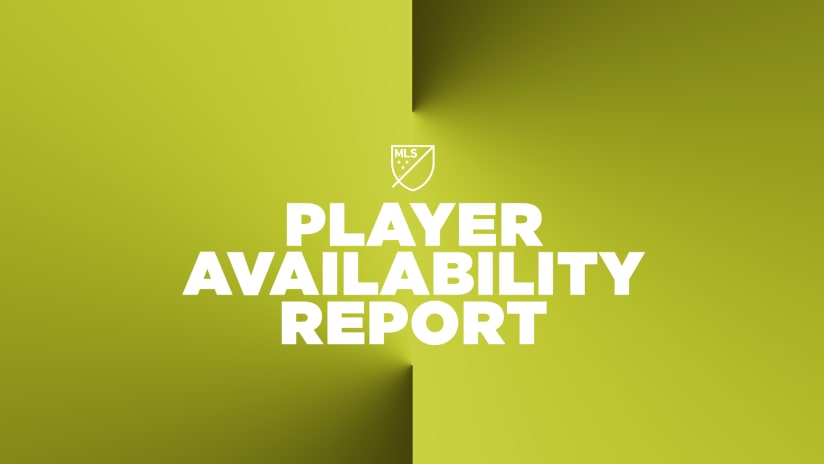Heartbreak, it would seem, is embedded in the DNA of Canadian soccer. How else to explain Tuesday’s soul-crushing and tournament-ending scoreless draw with Costa Rica at the Gold Cup?
We didn’t get CONCACAF’d by the refs. (The offside call on Marcus Haber’s disallowed goal was, unfortunately, correct.) We didn’t get put off by a hostile crowd. (The game was, after all, played on Canadian soil.)
No, the only possible explanation is that the soccer gods hate us—or, perhaps, that we were simply incapable of putting the ball in the back of the net (while being onside). Yeah, actually, that second one sounds about right.
- READ: Gold Cup: Canada youngsters Cyle Larin, Tesho Akindele disappointed, but learn valuable lessons
Sure, Canada came out looking more lively and dangerous than in either of their two previous games, and actually put the Ticos on the back foot for stretches of the game. But when the crucial moment came, when the Canadians entered the final third with their Gold Cup life on the line, the end result simply wasn’t there.
We can rue the what-ifs from this tournament till the cows come home. But if you get yourself stuck worrying about hypotheticals, you’ll just end up wondering what would have happened if you’d made that move you should have made when you were in high school. And that’s even worse for your mental health than following the Canadian men’s national team.
Of course, after another discouraging exit from the Gold Cup, the question is, “What next?” The correct answer is that the team licks its wounds and regroups for the resumption of World Cup qualifying at the start of September.
But it's mind-boggling how many people have concluded that head coach Benito Floro needs to be shown the door. Lest I be painted as an unswayable Floro apologist, let me be clear--some of his decisions in this tournament made little to no sense. Case in point: Whitecaps midfielder Russell Teibert rode the bench to start all three games.
Many also saw Flores' decision to play a defense-first mind set against El Salvador and Jamaica as naive. Some are also still picking up their jaws off the floor after the coach's decision to only start dynamic mid Jonathan Osorio in the tournament’s final game, and then pull him out in favor of defender Andre Hainault, as the game’s third sub.
Neither Floro nor the players are beyond criticism. They are professionals who are going out there to perform specific duties. When they don’t, everyone should ask questions. But immediately cranking the criticism meter up to 11 (i.e. “fire the guy”) sounds a bit like the hysterical overreaction of those who haven’t been following the program for very long.
Sometimes people tend to forget that national-team managers aren’t like club managers. If things aren’t going their way, national-team bosses can’t exactly shoot some billionaire owner an emoji-filled text message humbly requesting some new signings in the transfer window. With a national team, your player pool is what it is. New blood finds its way in over time, but this never happens overnight.
The reality is that, aside from early-round World Cup qualifiers against tiny Caribbean minnows, Canada has had trouble scoring goals for a long time, way before Floro had ever set foot in the country. The emergence of Cyle Larin had some hoping that we’d found the national team’s next saviour. Instead, he suffered a confidence-busting moment against El Salvador and was ineffective for the remainder of the competition.
Larin is 20 years old. He’ll recover. He’ll be fine. But with his deification on hold, once again Canada looked like the team that it’s looked like for years—a team that more often than not, didn’t really know what to do when it got close to the opponent’s net.
Some will say that Floro should have “gotten more” out of the team in the attack, presumably just before asking him to extract plasma from a nearby handful of rocks. The reality is that at 24 or 26 or 28 years of age, it is exceptionally difficult (if not impossible) for players to unlearn years of habits.
So while it’s nice to think that Floro has the capacity to magically transform Tosaint Ricketts or Marcus Haber into players that they aren’t, I presume that if he had such powers he’d be performing a stage show in Las Vegas rather than managing soccer.
And while it’s easy to say, "Those players shouldn’t have been there," I’m all ears as to which players—who are eligible and willing to play for Canada—could and should have been there instead.
Yeah, exactly.
Now, this may sound like some all-encompassing absolution of the manager and the players, which it isn’t. Larin should have scored against El Salvador. Ricketts should have scored against Jamaica. Haber probably should have scored against Costa Rica. And Floro surely could have done a few things much, much differently.
As a supporter, of course I’m angry about how this all turned out. But as someone who’s actually followed the program for longer than these past three games, I’m also able to understand that this fits into a bigger picture.
People want to see Canada play an exciting, free-flowing brand of soccer. Of course they do. That’s perfectly reasonable. Nobody honestly likes watching dire, defensive stalemates.
Canada tried to do this against Costa Rica--oh yes, they tried. But once again, the ruthlessness in attack that’s needed to succeed simply wasn’t there.
It rarely is. That’s another thing that is, unfortunately, embedded in the DNA of Canadian soccer.
But it doesn’t need to be this way. While neither Floro nor anyone else can snap their fingers and change the fortunes of the team overnight, anyone who truly wants to see the Canadian men’s national team succeed can get involved in their own way.
For the longest time, the problem has been a lack of connection between the grassroots and the professional game. Kids who showed promising skills simply didn’t have the venues in which to showcase them, or a development pipeline that would allow them to maximize their abilities.
For generations, Canadian kids who’ve tried to show some flair and creativity on the ball were instead told to “boot it out” by lunk-headed coaches, whose level of interest in the big picture of Canadian soccer ranged from little to none. And even the kids who did find outlets for their creativity found themselves stifled by a system that too often held them back, rather than allowing them to progress and shine.
But here’s the good news: Things are changing. The Canadian Soccer Association’s long-term player development plan is letting kids actually build their skills and move into productive environments. Academies—both local ones and those affiliated with professional teams—are providing that key connection to the top levels of the game.
So, yeah, you can mindlessly bleat “sack the CSA!” or yell until you’re blue in the face about Floro’s tactics, as if Floro’s decisions are the root cause of Canada’s perpetual scoring woes (spoiler alert: they’re not). Or, youn actually put your money where your mouth is, get involved at the grassroots level and help move the game forward.
The results won’t be seen for years. We may even have a few more scoreless Gold Cups between now and then. But it’s clear that what we’ve been doing this point simply hasn’t been working. It’s time to try something new.
For the time being, let’s put aside the delusions that Guus Hiddink or Fabio Capello will take a gigantic pay cut to come guide us to unexpected glory, and simply hope that Floro finds a way to get this group of players to punch above their weight and make a decent run in World Cup qualifying.
Once that campaign is done, we can all seriously contemplate Floro’s continued employment. But whatever the future holds for Floro, the simple truth is that if we have any hope of altering the DNA of Canadian soccer, it’s on us—all of us who care about the country and the program—to roll up our sleeves and do our part.
PLAYER RATINGS
Kenny Stamatopoulos (9) - With a shining performance, he kept Canada in the game.
Marcel de Jong (7) -This was his best defensive game of the tournament; he continued getting forward.
David Edgar (7.5) - He was a rock in the back once again.
Dejan Jakovic (7) - He continued forming a solid, stabilizing pairing with Edgar.
Karl Ouimette (7) - Ouimette did well after being inserted into the lineup due to a suspension.
Adam Straith (8) - He gets this mark simply for his dipsy-doodle late in the second half, a rare moment for Canadian fans to just smile.
Maxim Tissot (7) - He made an excellent addition off the top of the game, waned a bit as it went on.
Jonathan Osorio (6.5) -Osorio formed a big part of Canada’s attack-minded shift.
Julian de Guzman (8) - De Guzman made much of the team's positive work possible with his best game for Canada in a long time.
Tosaint Ricketts (6) -He played as spirited as ever, but showed some poor touches once again.
Marcus Haber (7) -Though he missed a chance in the first half, he put in a solid shift otherwise, including when he buried a set piece that was just inches offside.
Russell Teibert (7) - Once again, he provided a useful spark off the bench and made the Ticos sweat.
Cyle Larin (5) - Larin seemed unable to contribute much in wide position off the bench.
Andre Hainault (5) - He nearly found the back of the net but, alas, it was not to be.













